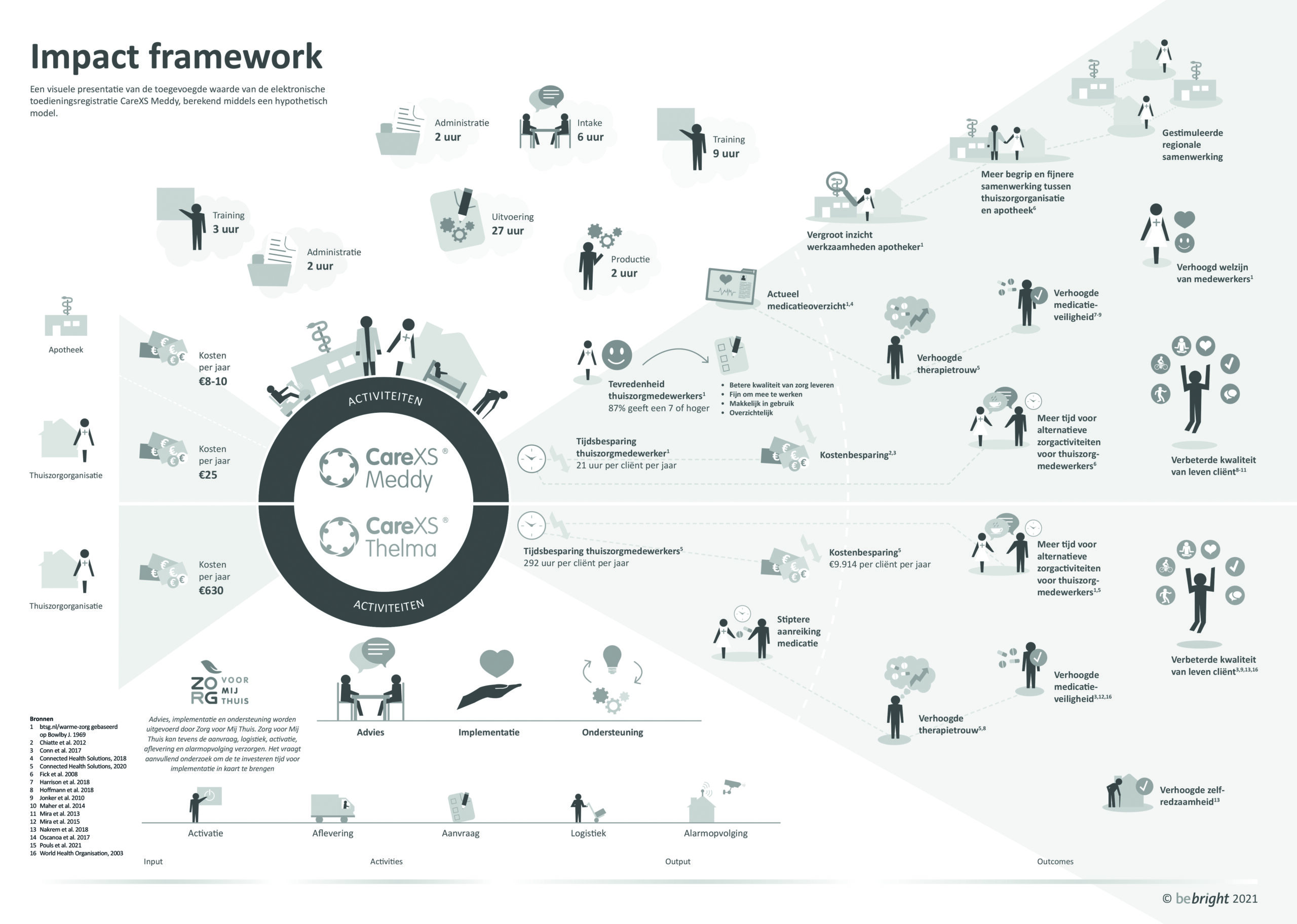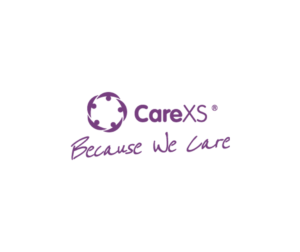In order to be able to administer medicines safely, home care professionals work with administration records. In most cases, this is still a paper list that is kept at the client’s home. One reason why this is prone to error is that the lists tend to get outdated quickly. The network of healthcare providers, especially in community care, consists of a wide range of professionals including specialists, a GP, thrombosis service, public pharmacy, service pharmacy, other healthcare organisations and others. The demand for digitisation of administration records and improvement of medical data exchange is growing. And the COVID-19 crisis accelerated the adoption of technology and digitisation in the medication process.

An alternative to paper-based administration records
Amstelring Wijkzorg offers home care to clients in need of everyday care, help with drug administration and other nursing care services. They employ around 600 staff in the Amsterdam region, Amstelveen and Haarlemmermeer. Astrid van den Berg (quality of care and drug safety at Amstelring): “Amstelring Wijkzorg introduced an electronic administration record system (e-TRS) and a digital collaboration environment in 2014 in order to facilitate safety of care and efficient collaboration with other (health)care providers.” The goal was to ensure that the right information is always available at the right time. Something that paper-based administration records were unable to guarantee. Van den Berg: “Paper-based records were prone to error. Especially when things had to be changed on the list. People would have to add information in handwriting which would lead to a lot of confusion.”
CareXS Meddy provides healthcare professionals with all the medical information they need in a single overview, just like paper-based drug administration records. It gives an overview of administered and prepared medication as well as what medication is managed by the client themselves. As collaboration takes place in a digital environment, the information is always up to date and complete. The application supports healthcare providers and pharmacists, GPs and informal care providers with current medication information and built-in checks and balances. For example when entering data and administering medication. Thanks to the e-TRS, healthcare professionals have more time for personal attention to the client while avoiding medication errors. The digital collaboration environment also facilitates better communication, and thereby collaboration, between the pharmacist and healthcare provider.

CareXS Meddy implementation and scaling at Amstelring Wijkzorg
CareXS has been widely implemented at Amstelring Wijkzorg and e-TRS is being used by around 1,500 clients. As with many innovations, the drive and perseverance of the initiators was key to the successful implementation.
Van den Berg: “We started with a pilot with a single team consisting of an enthusiastic home care worker, one pharmacist and just 2-4 clients. The supplier joined as well so we could co-create the system based on experiences and needs from the field. The organisation was involved in developing the e-TRS step by step. In the first phase, the digital system was used simultaneously with the paper-based system. “The first phase was all about generating confidence among users that the digital system would do what it was supposed to. People were still very much reserved about placing their full trust into the system. As you can imagine, it took quite a bit of perseverance for the teams to work with the paper-based and digital systems simultaneously. A couple of years ago, our organisation was one of the first community care organisations to implement self-managing teams. The community teams carry a lot of responsibility for their own group of clients as well as their work process”, according to Van den Berg. They did not necessarily fear the technology itself, but were worried they may make a mistake or have difficulty dealing with the change. Van den Berg: “In this phase, we paid explicit attention to the integration of the technology into existing work processes.”
This involved setting up a type of ‘service desk’ within the organisation. A key figure who worked for Amstelring and Connected Health Solutions (the CareXS Meddy supplier) answered questions from home care staff and developers. Information sessions were organised to inspire users and familiarise them with CareXS Meddy. And training sessions were organised to provide teams with training on the use of the e-TRS. As more users experienced the added value of the system, the number of users grew as did the number of ambassadors for the system. Van den Berg: “The user-friendliness and simplicity of the system helped tremendously. Everyone understands how it works within the hour”. It should be said that the (experienced) added value was not substantiated with extensive studies right away. Van den Berg: We have now begun the process of substantiating the effect via studies and surveys, but lacked the time to combine this with our everyday activities in the early stage.”
Interest among pharmacists was growing as well, especially in the independent nature of the system. “Our first major milestone was connecting a second pharmacist to the system. That is when we realised that this could start to grow rapidly”, according to Van de Berg. And it did: we signed the SIGRA partnership in 2019, an agreement with Connected Health Solutions. The partnership involved pharmacists and home care institutions in Amsterdam opting for a single e-TRS together: CareXS Meddy.
Today, the system is operating as expected and to the satisfaction of Amstelring Wijkzorg. The paper-based system has been eliminated almost entirely. But practice remains unruly. Van den Berg: “The fear of technology is persistent, especially among older employees. And old work processes are still favoured by some. That is why we continue to talk to the organisation and the supplier in this scaling phase in order to stimulate adoption of the application among our colleagues.”
Future perspective
Continued integration of the e-TRS with other systems of all the stakeholders is unavoidable in the future. This also brings about the necessary challenges. Van den Berg: “The healthcare industry needs a realistic funding system that is based on chain-transcending collaboration. After all, multiple parties share medication safety responsibility. And cost-benefit discussions can still get in the way of the scaling process.” They also see a growing demand for innovative solutions as a result of care being transferred to the home situation. Such as IV and diabetes care at home. Amstelring Wijkzorg continues to interface with Connected Health Solutions for the continued development of their digital solutions in the medication chain. One example is the recent kick off of a pilot for the Thelma® smart dispenser. Thelma® helps clients stay independently in their use of medication by sending reminders and dispensing drugs. It also offers healthcare providers a solution to stay updated on the client’s medication intake remotely.
Impact CareXS Meddy
An impact framework was drafted to map the potential social impact of CareXS Meddy in the beginning of 2021. The impact framework is based on the principles of a social business case.

The study shows that the deployment of the e-TRS gives all stakeholders insight into which medication needs to be administered to the client and at what moment in time. In short, CareXS Meddy contributes to:
- Healthcare quality: The online and constantly updated medication overview increases therapy compliance and medication safety. In addition, it facilitates regional partnerships. This stimulates different stakeholders to collaborate in other areas as well. And improve their organisation of the patient’s care. Home care staff are pleased with the quality of information exchange between CareXS Meddy and the pharmacy. And when information transfer is lacking in quality, this is often due to (mis)communication with GPs and hospitals rather than the pharmacy;
- Healthcare efficiency: Providing more patients with care, while using fewer care providers to address the increasing demand for care. The use of CareXS Meddy saves home care staff almost 21 annual hours per person on matters associated with medication safety. In addition, around 42% of them indicate that the e-TRS has reduced the number of (telephone) interruptions of their work. They also report a reduction in unnecessary emails to and calls with the pharmacy;
- Healthcare affordability: Providing higher-quality care with less money and time to make care future-proof. Previous studies have shows that undesirable effects and complications caused by medication errors are associated with high costs. Improved medication safety benefits the patient’s health. It also leads to less healthcare demand and fewer medication prescriptions. Thus the time savings of the home care employee are related to cost savings. Plus, CareXS leads to more effective deployment of medication.
As such, the medication chain has gained yet another great example where technology is deployed by care organisations to improve the effectiveness, affordability and quality of chronic and complex care.

